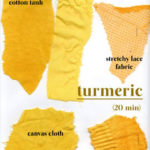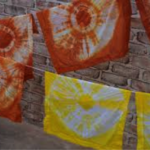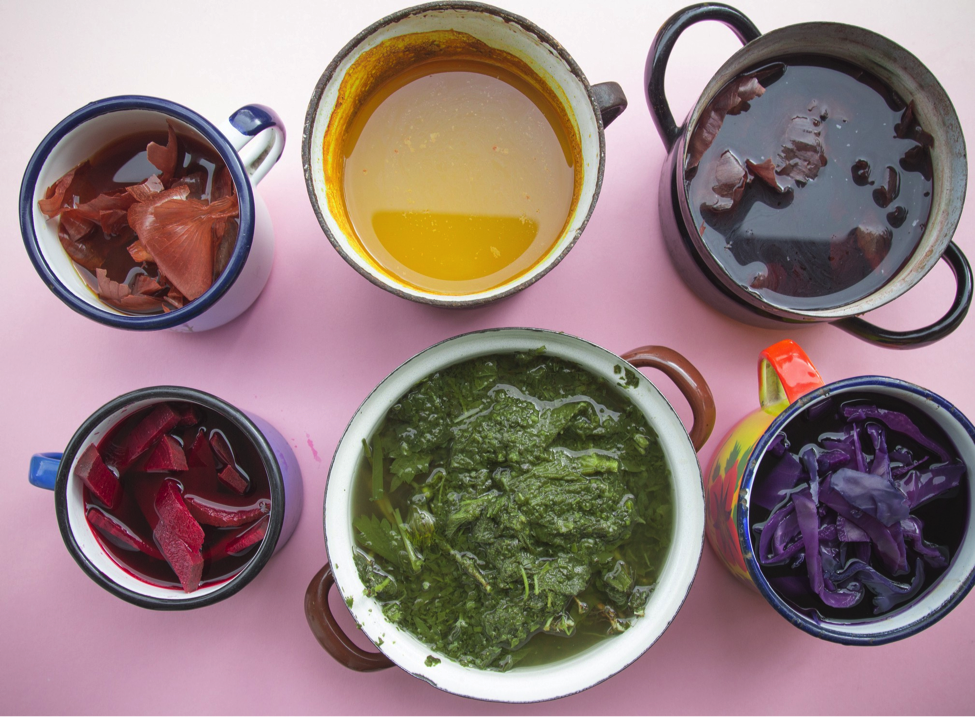By Alyssa Dyar
Today we’re going to learn about natural fabric dyeing at home. The benefits of natural dyes are numerous; they’re biodegradable and nontoxic! Plus, they allow for individual expression: No one else is going to make the exact same color.
To see the materials you’ll need and the process, watch the video below.
As you can see, turmeric and red cabbage are used in this video, and there are many other ingredients you can use at home to make natural dyes.
Find other materials you can use for at-home natural fabric dyeing below:
Orange: carrots, gold lichen, onion skins
Brown: dandelion roots, oak bark, walnut hulls, tea, coffee, acorns
Pink: berries, cherries, red and pink roses, avocado skins and seeds (really!)
Blue: indigo, woad, red cabbage, elderberries, red mulberries, blueberries, purple grapes, dogwood bark
Red-brown: pomegranates, beets, bamboo, hibiscus (reddish color flowers), bloodroot
Grey-black: Blackberries, walnut hulls, iris root
Red-purple: red sumac berries, basil leaves, daylilies, pokeweed berries, huckleberries
Green: artichokes, sorrel roots, spinach, peppermint leaves, snapdragons, lilacs, grass, nettles, plantain, peach leaves
Yellow: bay leaves, marigolds, sunflower petals, St John’s Wort, dandelion flowers, paprika, turmeric, celery leaves, lilac twigs, Queen Anne’s Lace roots, mahonia roots, barberry roots, yellowroot roots, yellow dock roots
Breaking Down Natural Fabric Dyeing Steps from the Video
Adding vinegar to the dyebath: The vinegar acts as a pH modifier to change the color of the dyebath. You can add lemon juice or vinegar to make your dye more acidic or add baking soda to make it more alkaline. Experiment and see what different colors you can make with just one dye. Not all dyes will have dramatic changes in color from modifying the pH, but it’s always fun to see what happens.
Adding salt to the dyebath: When using natural dyes, salt acts as a mordant. Mordants are minerals or metals that help the color from the dyebath embed into the fabric. When wetting your fabric before dyeing you can do a salt soak to pre-mordant the fabric.
Wetting the fabric before dyeing it: This allows the color to adhere to the fabric easily. If you stick the fabric into the dye when it’s dry, the fabric will have a hard time soaking up the color. Putting salt in the water when you wet your fabric will help the dye stick to the fabric.

Types of fabric to use: When using natural dyes it’s best to use natural fibers so the chemical process functions to its fullest. Examples of natural fibers include cotton, wool, silk, linen, and sometimes rayon. Cotton socks, cotton t-shirts, table linens (napkins, tablecloths), scarves, yarn, and any other material with natural fibers will work in this process. In the video unbleached muslin is used, which is a cotton without bleaching or colorants.

If you want to learn more about the chemistry of natural fabric dyeing, watch this excellent video. It goes into more depth about the process:


